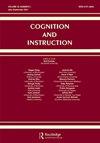七年级科学课堂掌握目标支持的混合方法探索
IF 2.6
1区 心理学
Q2 PSYCHOLOGY, EDUCATIONAL
引用次数: 1
摘要
摘要掌握目标结构传达了发展更深入理解的价值,是学生动机和参与的重要课堂支持,尤其是在符合下一代科学标准的科学学习背景下。先前的研究已经确定了目标结构的关键维度,但需要对课堂内外教师制定的目标结构和学生感知的目标结构的可变性进行更细致的检查。采用并行混合方法,我们对三名七年级科学教师在教授同一化学单元时如何制定不同的目标结构,以及他们的学生如何感知这些目标结构进行了案例研究。学生的看法与我们的观察分析基本一致,并表明积极的社会氛围和自主支持是掌握目标结构的重要因素。然而,对于在科学领域掌握目标定向和自我效能感水平较高的学生来说,平衡社会情感支持与足够的学术严谨性可能尤为重要。研究的意义包括需要进一步研究将课堂刺激与感知目标结构的可变性联系起来,特别是在具有不同动机特征的学生中。对实践的影响包括科学教师的策略,以促进学生对掌握目标的关注,特别是通过反馈和认可实践。本文章由计算机程序翻译,如有差异,请以英文原文为准。
A Mixed-Methods Exploration of Mastery Goal Support in 7th-Grade Science Classrooms
Abstract Mastery goal structures, which communicate value for developing deeper understanding, are an important classroom support for student motivation and engagement, especially in the context of science learning aligned with the Next Generation Science Standards. Prior research has identified key dimensions of goal structures, but a more nuanced examination of the variability of teacher-enacted and student-perceived goal structures within and across classrooms is needed. Using a concurrent mixed-methods approach, we developed case studies of how three 7th-grade science teachers enacted different goal structures while teaching the same chemistry unit and how their students perceived these goal structures. Student perceptions were largely consistent with our observational analysis and suggested that a positive social climate and autonomy support are important elements of mastery goal structure. However, balancing socio-emotional support with sufficient academic rigor may be especially important for students with high levels of mastery goal orientation and self-efficacy in science. Implications for research include the need for further research linking classroom stimuli to variability in perceived goal structure, especially across students with different motivational characteristics. Implications for practice include strategies for science teachers to promote perceptions of a mastery goal focus in students, particularly through feedback and recognition practices.
求助全文
通过发布文献求助,成功后即可免费获取论文全文。
去求助
来源期刊

Cognition and Instruction
Multiple-
CiteScore
7.90
自引率
12.10%
发文量
22
期刊介绍:
Among education journals, Cognition and Instruction"s distinctive niche is rigorous study of foundational issues concerning the mental, socio-cultural, and mediational processes and conditions of learning and intellectual competence. For these purposes, both “cognition” and “instruction” must be interpreted broadly. The journal preferentially attends to the “how” of learning and intellectual practices. A balance of well-reasoned theory and careful and reflective empirical technique is typical.
 求助内容:
求助内容: 应助结果提醒方式:
应助结果提醒方式:


